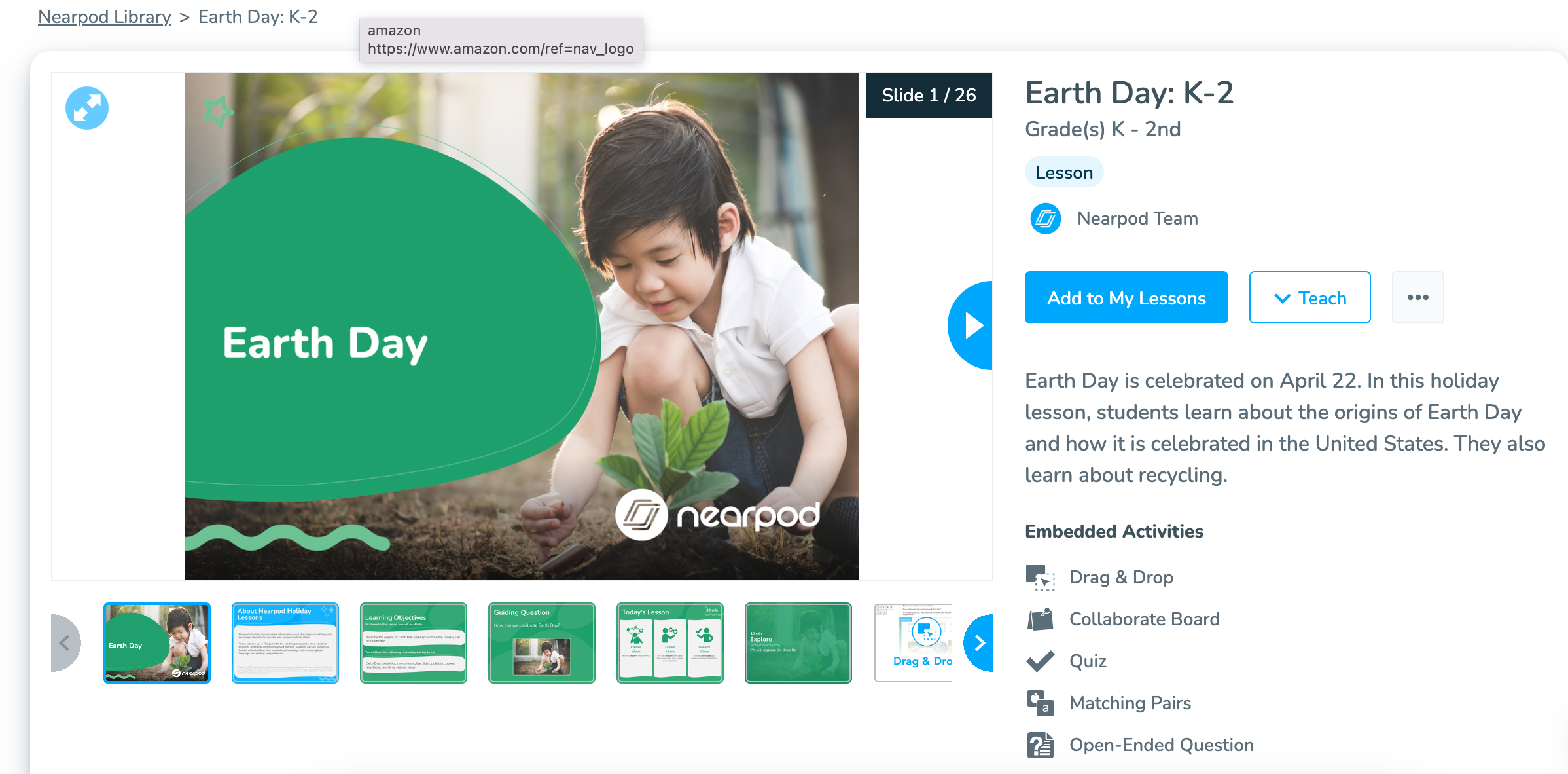Creating and presenting interactive presentations, formative or summative exams, and content on social justice, digital citizenship, vocabulary, SEL, and other topics may all be done with Nearpod. With Nearpod, teachers may incorporate interactive elements into any lesson—in a physical or virtual classroom. The idea is straightforward. A teacher can make interactive presentations with polls, videos, collaborate boards, quizzes, and other features.

The Nearpod app has a ton of amazing features. Its ability to create and share interactive presentations is possibly its best feature. This is an excellent method of involving pupils in the class and keeping their attention. Moreover, Nearpod offers an abundance of tools and resources to assist users in making the most of the app. Additionally, Nearpod users form a vibrant community that is always eager to lend a hand and encourage one another. It is among the most widely used educational applications on the market. There are numerous explanations for its appeal. However, let’s talk about how it functions and is accessible first.
Nearpod has numerous advantages when used in the classroom.
- It can, for starters, aid in boosting enthusiasm and involvement among students. Even if prepackaged classes can be edited and virtual reality can be incorporated into the classroom, learning can still be engaging.
- The interactive and multimedia-rich nature of Nearpod classes can also aid to maintain students’ interest in the subject matter.
- With Nearpod, educators can easily implement gamification in the classroom without requiring many tab clicks.
- Educators can offer students a more interactive learning environment by utilizing 3D models and simulations.
- Teachers can use Nearpod for post-session reports and immediate feedback.
- Finally, teachers may design a more customized remote learning experience for students because they can engage in Nearpod sessions using their own devices.

Here is an image of a Nearpod lesson for k-2 about Earth Day. I would use this Nearpod in my classroom.
Some Nearpod courses promote international cooperation by including virtual field visits to various locations, group projects with students from various countries, discussions of global concerns, cultural exchange activities, and language learning chances. Nearpod helps kids from different backgrounds develop empathy, cooperation, and cross-cultural communication skills through these exercises.